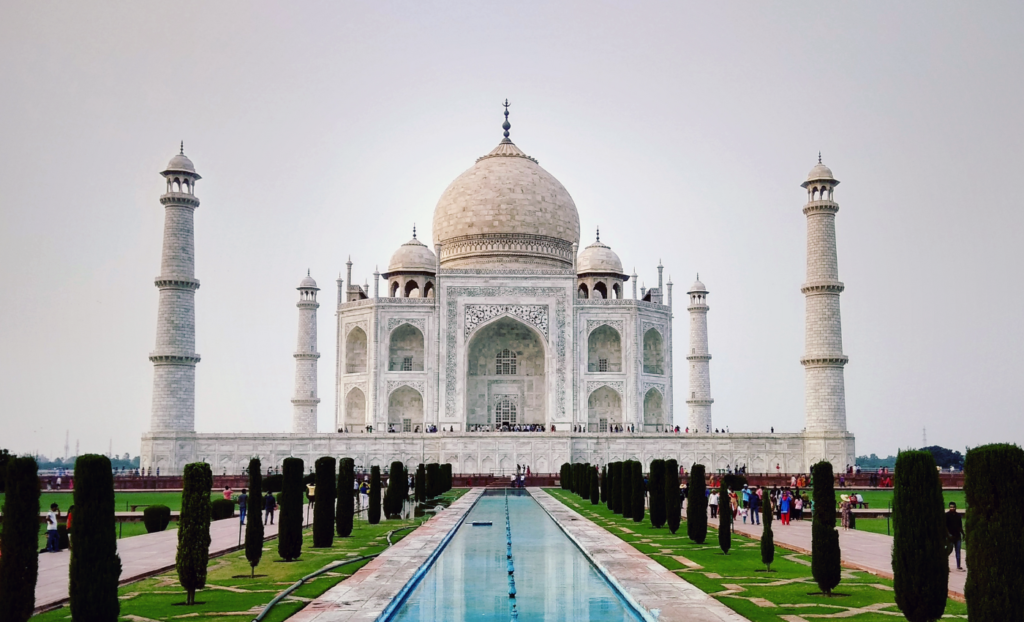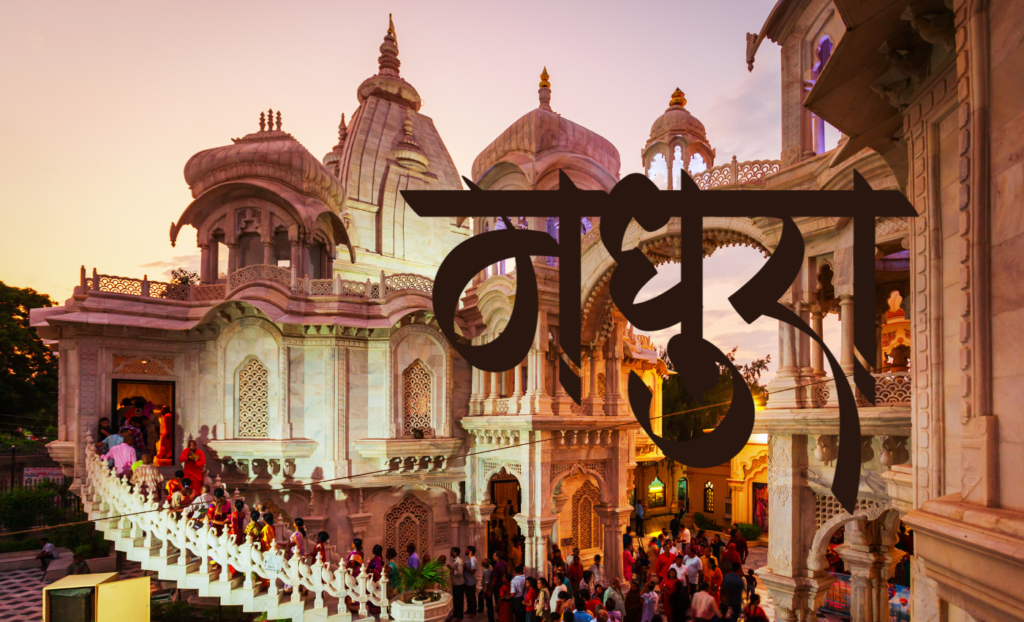A state rich in culture and history, Uttar Pradesh provides evidence of India’s rich past. Its numerous tourist sites provide an unmatched tapestry of experiences for guests by weaving tales of love, faith, bravery, and spirituality. Let’s take a tour around Uttar Pradesh’s ageless attractions.
I. Introduction
A. Brief Overview of Uttar Pradesh
Uttar Pradesh, often referred to as the “Heartland of India,” is the most populous state in the country. With a history dating back to ancient times, it has been a witness to the rise and fall of empires, making it a treasure trove of historical and cultural wonders.
B. Importance of Tourist Attractions
The state’s tourist attractions go beyond their aesthetic appeal; they narrate tales that transcend time. Each site is a chapter in India’s narrative, contributing to the rich tapestry of the nation’s past.
II. Taj Mahal: A Symbol of Eternal Love

A. Historical Background
The iconic Taj Mahal, a UNESCO World Heritage Site, was commissioned by Emperor Shah Jahan in memory of his beloved wife Mumtaz Mahal. Its construction represents an eternal testament to love and architectural brilliance.
B. Architectural Marvel
The white marble structure, adorned with intricate carvings and inlaid gemstones, is a masterpiece of Mughal architecture. The symmetrical gardens and reflecting pool enhance its ethereal beauty.
C. Visitor Experience
As visitors stroll through the pristine pathways, they are enveloped in a sense of romance and history. The Taj Mahal’s grandeur and the stories it holds captivate the hearts of millions each year.
III. Varanasi: Where Spirituality Meets Tradition
A. Sacred Ganges River
Varanasi, situated on the banks of the sacred Ganges, is one of the oldest continuously inhabited cities in the world. The river holds immense spiritual significance, and the ghats along its banks are witness to ancient rituals.
B. Ghats and Rituals
The ghats of Varanasi come alive with religious ceremonies, including the mesmerizing Ganga Aarti. Pilgrims and tourists alike partake in boat rides to witness the city’s spiritual vibrancy.
C. Cultural Significance
Varanasi is a hub of classical music, dance, and literature. The narrow lanes reverberate with the sounds of traditional instruments, creating an atmosphere that transcends time.
IV. Lucknow: The City of Nawabs
A. Historical Heritage
Lucknow, the capital of Uttar Pradesh, is a blend of architectural brilliance and cultural richness. The city’s historical monuments, such as the Bara Imambara and Rumi Darwaza, reflect the grandeur of the Nawabi era.
B. Awadhi Cuisine
The city is a gastronomic delight, with its Awadhi cuisine winning hearts across the globe. From kebabs to biryanis, Lucknow’s culinary offerings are a journey into the royal kitchens of the past.
C. Architectural Gems
Lucknow’s skyline is adorned with architectural gems, each narrating a tale of the city’s illustrious past. The British Residency and Constantia House stand as reminders of a bygone era.
V. Agra Fort: The Red Sandstone Marvel

A. Historical Significance
Agra Fort, another UNESCO World Heritage Site, played a pivotal role in Mughal history. Its strategic location and imposing structure make it an integral part of Agra’s historical landscape.
B. Architectural Features
Constructed with red sandstone, the fort boasts impressive palaces, mosques, and audience halls. The intricate carvings and delicate marble work showcase the Mughal craftsmanship.
C. Connection with Mughal History
The fort served as the main residence of the Mughal emperors until Shah Jahan moved to the nearby Taj Mahal. Exploring its vast expanse is a journey through the corridors of power and intrigue.
VI. Allahabad: Confluence of Rivers and Faiths
A. Triveni Sangam
Allahabad, now Prayagraj, is famed for the Triveni Sangam, the confluence of the Ganges, Yamuna, and Saraswati rivers. It is believed that a dip in these holy waters cleanses the soul.
B. Kumbh Mela
The city hosts the grand Kumbh Mela, one of the largest religious gatherings in the world. Millions of pilgrims gather to partake in the sacred event, making it a spectacle of faith and devotion.
C. Historical Landmarks
Allahabad’s landscape is dotted with historical landmarks, including the Allahabad Fort and Anand Bhavan, adding layers to the city’s multifaceted history.
VII. Ayodhya: The Birthplace of Lord Rama
A. Ram Janmabhoomi
Ayodhya gained global attention due to the Ram Janmabhoomi-Babri Masjid dispute. The city holds immense religious significance as the birthplace of Lord Rama.
B. Ayodhya’s Cultural Heritage
Beyond the controversies, Ayodhya is a repository of cultural heritage. Temples, including the Kanak Bhavan and Hanuman Garhi, are testaments to the city’s spiritual legacy.
C. Recent Developments
Recent developments, including the construction of the Ram Mandir, mark a new chapter in Ayodhya’s history, inviting pilgrims and tourists to witness the city’s transformation.
VIII. Mathura: Krishna’s Abode

A. Krishna Janmabhoomi
Mathura, the birthplace of Lord Krishna, is a pilgrimage site for millions of devotees. The Krishna Janmabhoomi temple attracts visitors seeking a glimpse of the divine.
B. Temples and Festivities
The city is adorned with temples dedicated to Lord Krishna, and festivals like Holi are celebrated with unparalleled fervor. Mathura’s lively streets resonate with devotional songs and festivities.
C. Blend of History and Spirituality
Mathura seamlessly blends its historical roots with spiritual significance, creating an ambiance that transports visitors to the era of Krishna’s childhood.
IX. Chitrakoot: A Tranquil Pilgrimage
A. Mythological Significance
Chitrakoot, nestled in the lap of nature, holds immense mythological significance. It is believed to be the place where Lord Rama, Sita, and Lakshmana spent their exile years.
B. Natural Beauty
The town is surrounded by lush forests, serene rivers, and picturesque landscapes. It offers a peaceful retreat for those seeking solace amidst nature’s beauty.
C. Peaceful Atmosphere
Chitrakoot’s tranquil atmosphere and sacred sites, including Kamadgiri and Sati Anusuya Ashram, make it a destination where spirituality meets serenity.
X. Sarnath: Where Buddhism Began
A. Historical Importance
Sarnath, near Varanasi, is where Lord Buddha delivered his first sermon after attaining enlightenment. The site holds immense historical and religious significance for Buddhists worldwide.
B. The Dhamek Stupa
The Dhamek Stupa, an imposing structure, stands as a symbol of Buddhist architecture. Visitors can explore the ancient ruins and the Sarnath Archaeological Museum to delve into the region’s past.
C. Buddhist Relics and Museum
Sarnath’s museum houses a collection of Buddhist artifacts and relics, providing insights into the life and teachings of Lord Buddha. It is a pilgrimage site for those seeking spiritual enlightenment.
XI. Jhansi: The Valor of Rani Laxmi Bai
A. Rani Mahal
Jhansi, immortalized in history by the valiant Rani Laxmi Bai, boasts the Rani Mahal. The palace narrates the tale of Jhansi’s courageous queen and her role in the Indian Rebellion of 1857.
B. Jhansi Fort
The imposing Jhansi Fort, perched atop a hill, offers panoramic views of the city. It served as a stronghold during the revolt and stands as a symbol of resistance.
C. Historical Context
Jhansi’s historical context, intertwined with the bravery of Rani Laxmi Bai, invites visitors to explore the city’s vibrant past and pay homage to a key figure in India’s struggle for independence.
XII. Kushinagar: Buddha’s Final Resting Place
A. Mahaparinirvana Temple
Kushinagar, where Lord Buddha attained Mahaparinirvana, is a pilgrimage site for Buddhists. The Mahaparinirvana Temple and the reclining Nirvana statue are focal points of veneration.
B. Serene Ambiance
The town exudes a serene ambiance, creating an atmosphere conducive to contemplation and reflection. Visitors often find solace in the tranquil surroundings of Kushinagar.
C. Pilgrimage Site
Kushinagar’s significance as Buddha’s final resting place makes it a revered destination for pilgrims seeking a connection with the spiritual journey of the enlightened one.
XIII. Sravasti: The Historic City
A. Jetavana Monastery
Sravasti, an ancient city, is known for the Jetavana Monastery. It was a key center for Buddhist teachings, and remnants of the monastery provide a glimpse into Sravasti’s illustrious past.
B. Buddha’s Miracles
The city is associated with several miracles performed by Lord Buddha, adding to its spiritual significance. Pilgrims visit Sravasti to witness the places where these miracles occurred.
C. Archaeological Significance
Sravasti’s archaeological sites and relics contribute to its archaeological significance. The city’s excavation sites unveil layers of history, making it a destination for history enthusiasts.
XIV. Kanpur: Industrial Hub with Historical Roots
A. Cawnpore Club
Kanpur, an industrial hub, also houses historical landmarks like the Cawnpore Club. The club, with its colonial architecture, stands as a reminder of Kanpur’s colonial past.
B. Allen Forest Zoo
The Allen Forest Zoo, amidst greenery, offers a refreshing escape. Visitors can explore the diverse flora and fauna, balancing the city’s industrial hustle with natural tranquility.
C. Blend of Modernity and History
Kanpur’s unique blend of modernity and history showcases the city’s evolution. From industrial prowess to cultural gems, Kanpur invites visitors to explore its multifaceted identity.
XV. Conclusion
A. Recap of Attractions
Uttar Pradesh’s tourist attractions, ranging from the Taj Mahal to the historic city of Sravasti, offer a diverse and enriching experience. Each destination contributes to the cultural mosaic of the state.
B. Invitation to Explore Uttar Pradesh
As we conclude our journey through the timeless charms of Uttar Pradesh, an invitation is extended to all travelers and explorers. Dive into the rich history, spirituality, and cultural diversity that await in this vibrant state.



